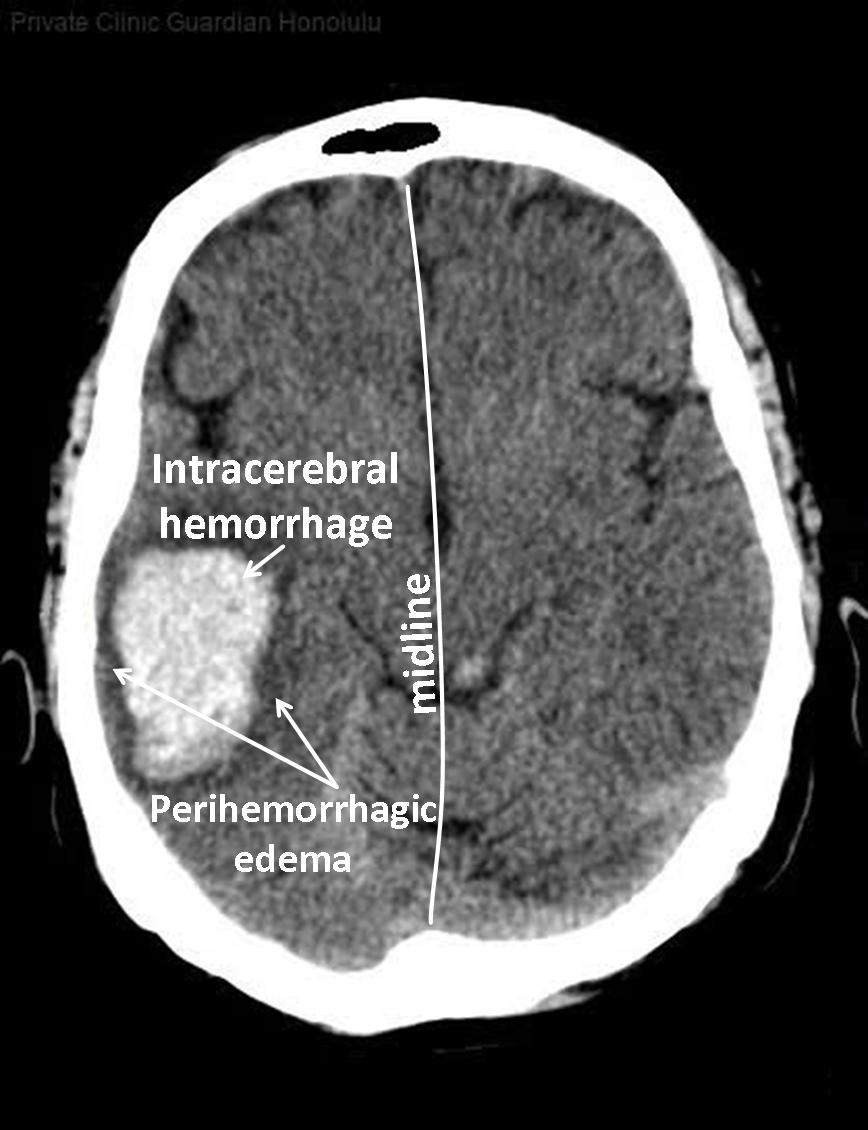An intracerebral hemorrhage, or intraparenchymal cerebral hemorrhage, is a subset of an intracranial hemorrhage. In the layers 32 to 54 on the right side (note R = right) of this computed tomography (CCT) without contrast agent is an intracerebral hemorrhage (ICB). An ICB is a bleeding into the brain tissue. The fresh blood can be recognized on CT scans because this blood appears brighter than other tissue. At the edge of the ICB, perifocal edema is already evident (dark colored in the CT), indicating that the bleeding event is already several hours old. The midline shift to the contralateral side is mild, so there is no indication for surgical evacuation. Intracranial hemorrhage is common and is caused by diverse pathology, including trauma, hypertension, cerebral amyloid angiopathy, hemorrhagic conversion of ischemic infarction, cerebral aneurysms, cerebral arteriovenous malformations, dural arteriovenous fistula, vasculitis, and venous sinus thrombosis, bleeding into brain metastases or brain tumors among other causes.


© Wolfgang Schramm (2008)
• Homepage
• Zu deutscher Sprache wechseln